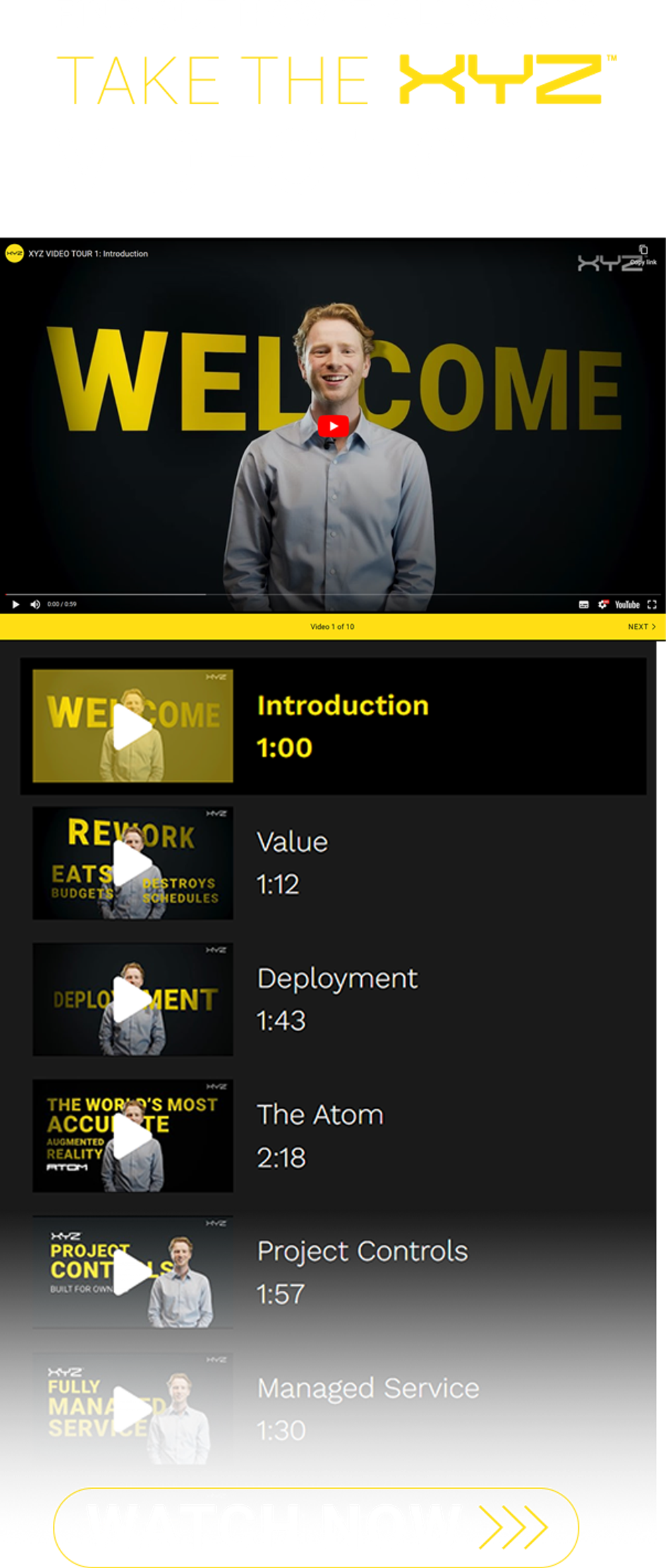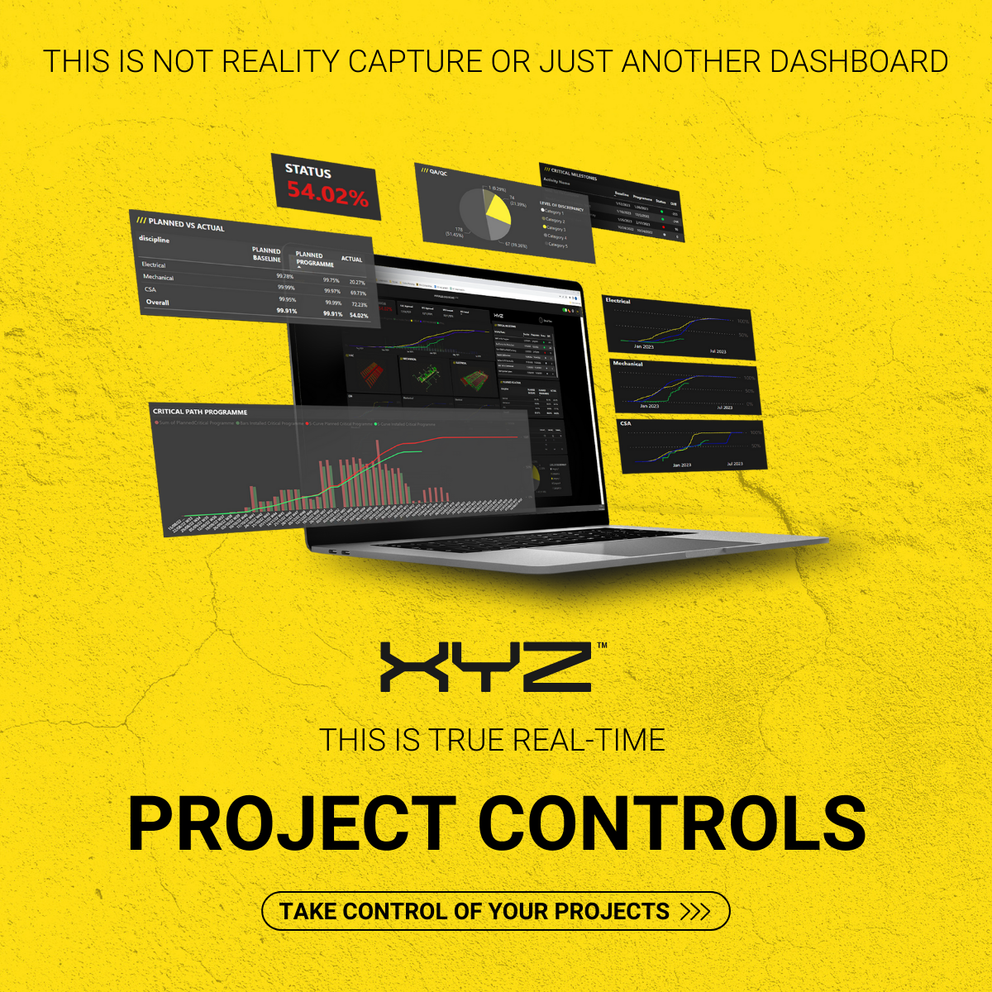-
Services
Services
Find out how we work with our clients and deliver value to construction projects from day one
-
Solutions
Solutions
Discover how all our solutions sync together to deliver construction's most powerful BIM platform to date
-
Built for
Built for
-
Industry
Industry
Understand how we support construction's biggest sectors, and hear from our clients who have experienced the power of XYZ
-
Resources
Resources
Get stuck into all our latest thought leadership, news, reports and industry leading content
-
Company
Company
Dive into what makes XYZ tick, unearth why construction is in our DNA and why we are world leaders in AR solutions

Insights
How to Design and Build a Data Center

06 September 2023
The IT spending on data centers is forecasted to reach $222 billion by 2023, a huge jump from just $140 billion in 2012. All this money going into the sector means that more and more data centers are being built.
To meet demand and get these centers built on time and within the set budget, construction teams can no longer rely on the data center blueprints from decades ago. To stay ahead of the game, construction companies will have to stay in line with the latest trends in design and build processes.
The guide below covers the basics of the data center building process and how XYZ Reality tools can help construction companies build better and more efficiently.
Designing and Building a Data Center: The Right Approach
The design process usually sets the tone for the entire data center build. That's why it's critical to get it right from the start and avoid costly rework. Here are some key steps:
Step 1: Account for the Cloud
Many companies, especially tech companies, are adopting cloud computing technology. With this, designers and IT architects should sit together to consider the options for integrating a cloud solution into their data center design.
Step 2: Include Data Continuity In Your Design
What happens when there's a natural disaster or an outage? Will your company lose all its data?
It's imperative to include a way to make sure there are power source backups and failover protection. It helps to follow data center design standards and guidelines. BIM can help companies better adhere to construction standards and quality checks.
Step 3: Plan Spacing for Future Upgrades
Rework is one of the most significant issues in construction. Teams can avoid rework and future rebuilds by designing with the future in mind.
For example, choose cables with small diameters so that they do not take up too much space. As for floorspace, pad extra to include new equipment later.
This is easier said than done without effective tools. XYZ’s Atom™ can help teams build better the first time around and avoid mistakes/rework altogether. With the help of our engineering-grade AR headset, teams can plan out their current and future designs faster.
The augmented reality headset enables construction teams to view a hologram of the BIM design to 3-5 millimeter accuracy in real-time, ensuring any deviations from design and clashes are spotted at the earliest convenience, to avoid incurring unnecessary costs and delays.
Step 4: Proceed to the Building Stage
Once you have a design, you can begin the building process. Data centers have a number of integral components, including:
- Servers
- Network Infrastructure
- Security appliances and measures
- Racks
- Airflow systems
- Monitoring structures
- Cooling systems
- Fire protection systems
- Backup power systems
Construction project managers have a large responsibility of making sure everything is where it needs to be on schedule. With help from XYZ’s project controls solution, managers can track build progress linked to the schedule, right down to the smallest details.
All data syncs instantly, providing an accurate real-time view of the health of all your projects, from a single project controls platform, accessible anywhere. This advanced approach to progress tracking eliminates risks, enabling confident and informed decision-making. With data center construction delays costing teams up to thousands of dollars per minute, staying on schedule is critical.
Best Practices for Building a Data Center
The growing dependence on technology means an increase in the demand for data centers. While companies may have different requirements based on the exact location of the facility and the type of data being stored, there are a few things construction teams can do to streamline the process.
Avoid Common Mistakes
There are some mistakes construction teams and data center owners have made enough times that they now serve as warnings to future projects. Here are the specifics:
- Inadequate Site Selection
- Poor Planning for Scalability
- Insufficient Power and Cooling Capacity
- Poor Cable Management
- Failure to Comply with Regulations
Through the use of BIM and AR, teams can avoid some of these issues and build better.
Use AR-Powered Tech in the Construction Process
Augmented reality is making its way into construction. Engineering Grade AR solutions like XYZ Reality’s Atom headset let you view and interact with hyperscale 3D BIM models onsite.
As mentioned before, BIM is a powerful tool that can help bring teams together and improve the design process. XYZ takes BIM a step further with the Atom by allowing teams to view the design model as a holographic overlay over the construction site.
With it, teams can detect design clashes and errors in real-time, making quality checks faster for everyone involved.
XYZ’s Project Controls solution enables teams to proactively manage their projects with objective real-time insights. By linking the schedule to the model, users can track up to 95% of construction activities, right down to the nuts and bolts, helping teams stay ahead of schedule.
As a site manager, you can enjoy site-wide transparency and objective insights into the progress of your project. Instead of leaving the numbers and values to subjective guesswork, our construction progress tracking solution helps you provide accurate progress and quality reports.
Design and Build Better the First Time with XYZ Reality.
Building a data center is no easy feat. But if you have a stellar design and modern technologies, like engineering grade augmented reality and unparalleled project controls, by your side, the process becomes much smoother.
Want to experience the efficiency of AR in construction for yourself? Get a demo of the Atom headset to explore the possibilities.







